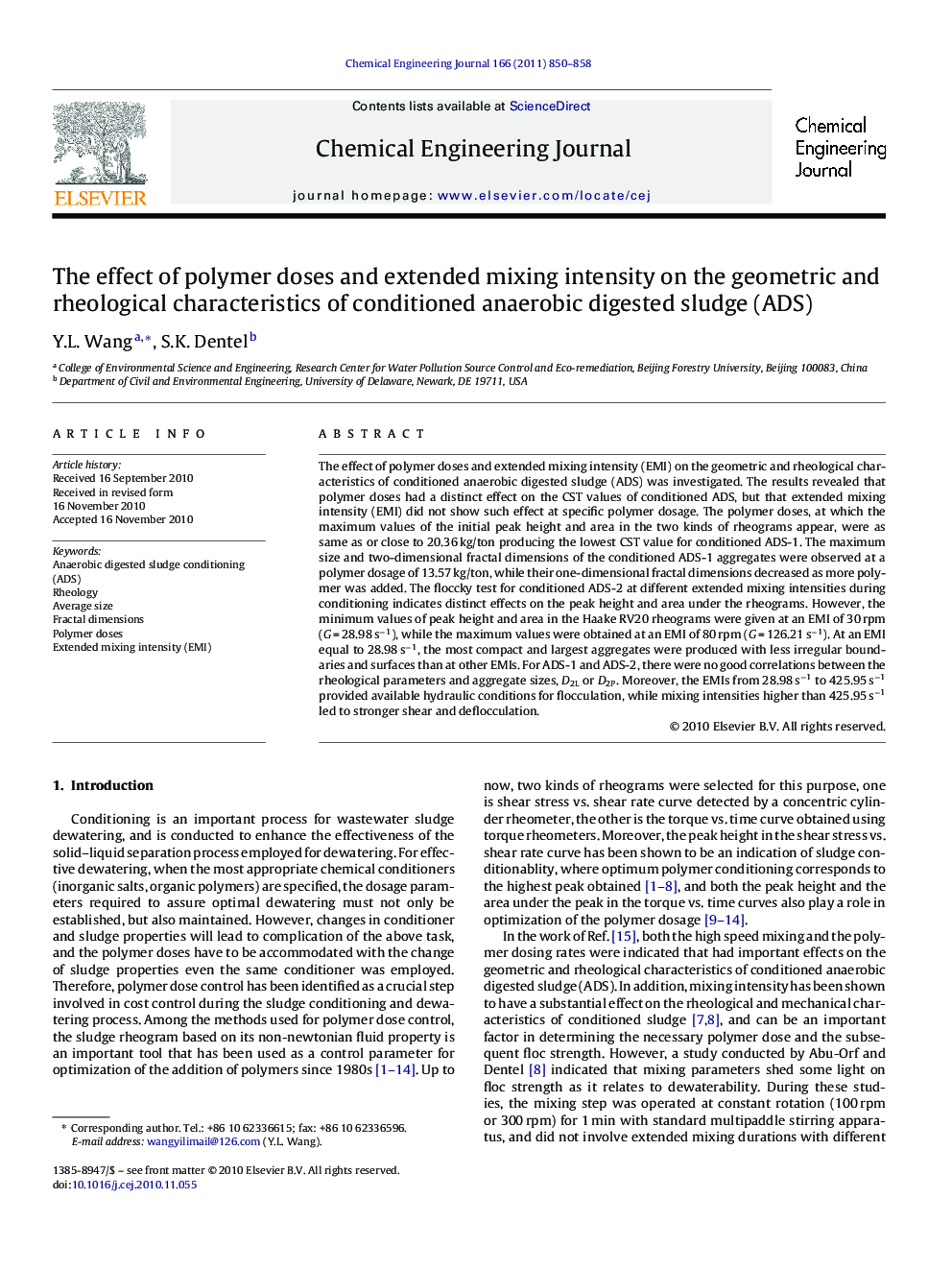| Article ID | Journal | Published Year | Pages | File Type |
|---|---|---|---|---|
| 151461 | Chemical Engineering Journal | 2011 | 9 Pages |
The effect of polymer doses and extended mixing intensity (EMI) on the geometric and rheological characteristics of conditioned anaerobic digested sludge (ADS) was investigated. The results revealed that polymer doses had a distinct effect on the CST values of conditioned ADS, but that extended mixing intensity (EMI) did not show such effect at specific polymer dosage. The polymer doses, at which the maximum values of the initial peak height and area in the two kinds of rheograms appear, were as same as or close to 20.36 kg/ton producing the lowest CST value for conditioned ADS-1. The maximum size and two-dimensional fractal dimensions of the conditioned ADS-1 aggregates were observed at a polymer dosage of 13.57 kg/ton, while their one-dimensional fractal dimensions decreased as more polymer was added. The floccky test for conditioned ADS-2 at different extended mixing intensities during conditioning indicates distinct effects on the peak height and area under the rheograms. However, the minimum values of peak height and area in the Haake RV20 rheograms were given at an EMI of 30 rpm (G = 28.98 s−1), while the maximum values were obtained at an EMI of 80 rpm (G = 126.21 s−1). At an EMI equal to 28.98 s−1, the most compact and largest aggregates were produced with less irregular boundaries and surfaces than at other EMIs. For ADS-1 and ADS-2, there were no good correlations between the rheological parameters and aggregate sizes, D2L or D2P. Moreover, the EMIs from 28.98 s−1 to 425.95 s−1 provided available hydraulic conditions for flocculation, while mixing intensities higher than 425.95 s−1 led to stronger shear and deflocculation.
